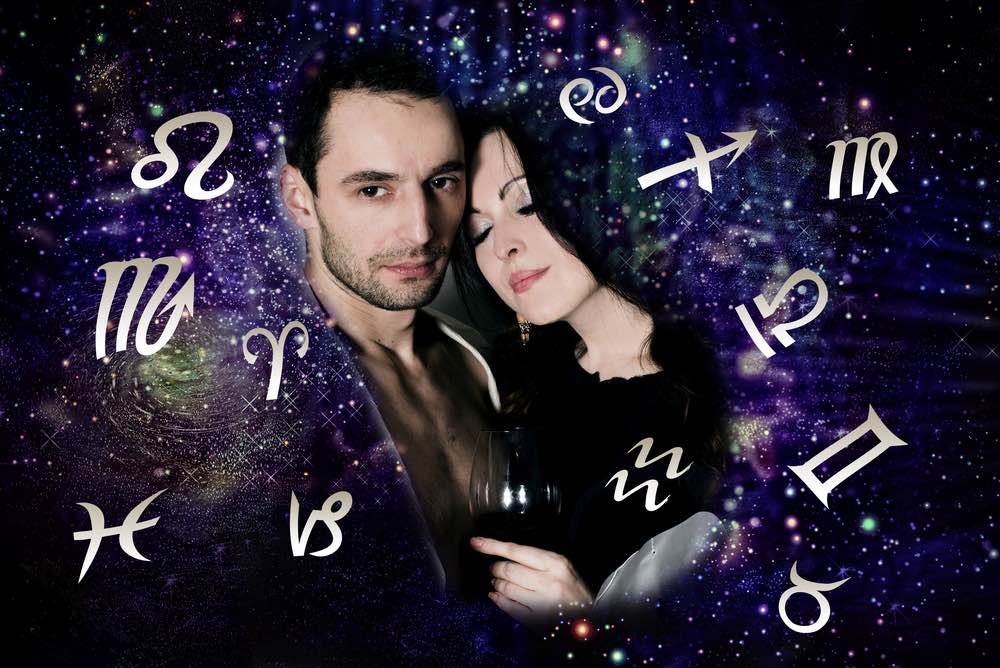
If you’ve ever browsed astrology websites or newspaper horoscopes, you’re probably read about astrological compatibility. Cancers are most compatible with Virgo and Taurus, these guides may say, but avoid Aries and Libras. These are simplistic examples, but how do astrologers determine compatibility? With a mix of ancient methods and modern wisdom, astrologers use synastry to offer insights about couples’ romantic relationships.
From the Communal to the Personal
Centuries ago, humans began using the stars for timekeeping and navigation. While we’ve developed newer technologies and methods for both, our ancestors’ studies of the heavens helped us discover important information about our planet’s size, shape, and movements. The Greek mathematician Eratosthenes used shadow lengths cast by the sun in two locations – Alexandria and Syene – plus the distance between the two cities to help him calculate Earth’s circumference. His result was very close to the actual figure: 39,375 kilometers versus an equatorial circumference of 40,075 kilometers as calculated by NASA.
Eratosthenes made his calculations around 240 B.C.E., a time in which both astronomy and astrology thrived throughout the ancient world. Studying the stars was big business: Ancient Babylonians regarded stars and planets as signals from the gods. Eventually, astrology’s focus expanded from the fates of nations and monarchs to encompass general guidance for everyday people. That’s partly how synastry became a thing. From casting two individuals’ birth charts, astrologers could study planetary placements, speculate about compatibility, and point out potential trouble spots.
How Synastry Works
“Synastry” comes from two Greek words, “sun” and “astria,” and means “conjunction of stars.” Mystic Medusa explains that this practice compares two people’s birth charts to see how their cosmic energies interact. For simpler study, a synastry chart combines the two: one individual’s planets and points on the inner ring, and the prospective partner’s astrological data on the outer ring. With this format, it’s easier to see key connections and relationships.
Synastry focuses on planets and points, but it also examines astrological aspects that exist between the two charts. As a quick refresher, aspects are the distances and mathematical angles between two or more planets and points. AstroStyle breaks down how they work. “Soft” aspects like conjunct, sextile, and trines promise positive energies, while “hard aspects” like squares and opposites usually signal potential difficulties. Multi-planet aspects can also be “hard” or “soft,” as the AstroTwins further explain.
Understanding Synastry in Practice
Synastry examines aspects between two people’s charts. Meanwhile, it also looks at harmonies or dissonances created by how planets’ and points’ energies combine. Sometimes they complement, but these energies can also clash. The nature of the aspect simply enhances these effects, for better or worse. “Soft aspects” can positively amplify them, while “hard” aspects can add more challenges to the mix.
AstroStyle mentions a Mercury-Neptune conjunct as an example. With Mercury ruling communication and Neptune representing the imagination, the two can either produce astounding creativity or clash when Mercury’s practical nature meets Neptune’s flights of fancy. When these planets square each other, however, their energies may fight for dominance. A couple with this aspect in their synastry may exhibit different communication styles and sometimes struggle to understand each other.
Examining Possibilities, Not Predicting Fates
While comparing astrological energies is the basis of synastry, it also relies on how astrologers interpret the relationships between two individual charts. Nothing is set in stone, but that’s a common misconception about astrology. Many astrologers assert that we aren’t controlled by the planets and stars. They simply give off a wide range of energies that can blend, oppose, or play off each other in an infinite number of ways. Once you’re aware of these influences, they add, you can use this information in positive ways. Free will is still important, especially when building a stable, supportive, and nurturing love relationship.

